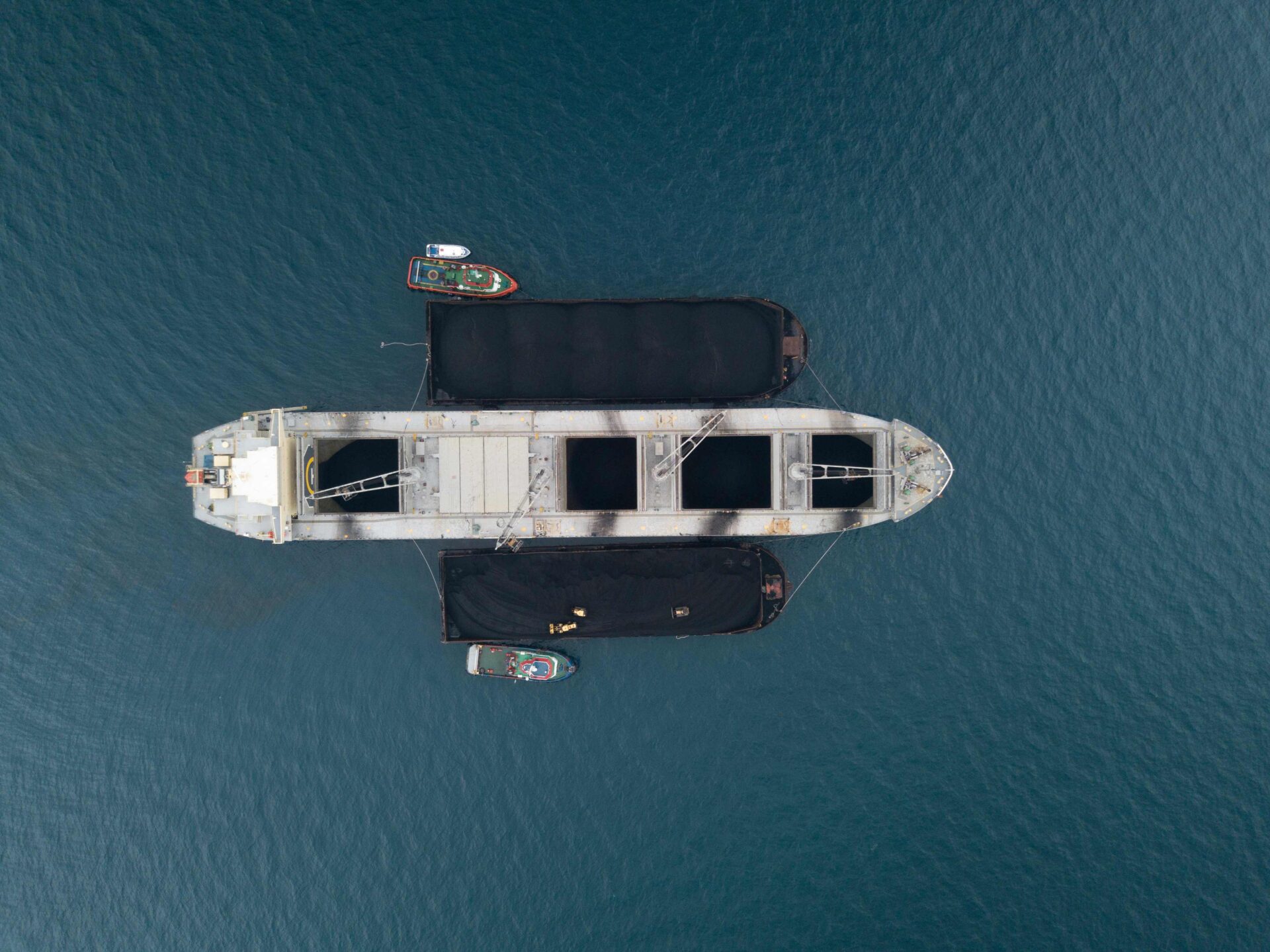

Over the past week, thermal coal indices on the European market stayed at the level of 97-98 USD/t. Coal quotations continued to sit at 6-month lows despite the strengthening of the energy market. Increased inventories at ARA terminals and consumers’ stockpiles, as well as mild weather are hindering prices from moving above 100 USD/t.
Gas quotes at TTF hub climbed to 338 USD/1,000 m3 (+14 USD/1,000 m3 w-o-w), driven by the suspension of some capacities in Norway, stronger LNG quotes, following the escalation of conflict in the Middle East and lower supply from US Freeport LNG due to the closure of one of its liquefaction units.
South African High-CV 6,000 remains in a downtrend at 89-90 USD/t on limited demand in Europe and the Asia-Pacific. Furthermore, rail traffic to South Africa’s Richards Bay Coal Terminal (RBCT) resumed and incidents of High-CV coal thefts on the export route fell by 30-40%. Inventories at RBCT stay at a comfortable level of around 3 mio t.
RBCT terminal set a transshipment target of 50 mio t for 2024, which is 17% below 60 mio t planned by operator Transnet. Previously, RBCT officials were typically guided by Transnet’s estimates, as the terminal is entirely dependent on rail infrastructure.
In China, spot prices for 5,500 NAR coal at the port of Qinhuangdao came under pressure, down 1 USD/t to 128 USD/t, reflecting lower coal consumption at power plants and slowing industrial demand ahead of the Chinese New Year. Minor traders cut prices to clear their stocks before the holidays (February 10).
Coal consumption at 6 largest Chinese coastal thermal power plants decreased to 853 kt/day (-14 kt/day w-o-w). Total stocks in 9 major ports dropped to 22.7 mio t (-0.2 mio t w-o-w).
Indonesian 5,900 GAR slipped to 92 USD/t (-1 USD/t w-o-w) on the back of lackluster demand from Asia-Pacific and India, where high stockpiles were recorded, however, adverse weather conditions in South Kalimantan and Sumatra resulted in a supply cut as transshipment capacity tightened. According to a new forecast, heavy rains will continue through early February and the monsoon season in Southeast Asia will extend through April.
In addition, about 40% of the 815 companies (327), that applied to the government for approval of production volumes have not yet received permits and have not started extraction in 2024. So far, about 169 applications were rejected due to non-compliance.
At the same time, Bayan Resources plans to maintain production growth, which is expected to jump 13% to 56.7 mio t in 2024 (+6.4 mio t vs. 2023). Bayan Resources, which produces coal with a calorific value of 3,800-7,400 kcal/kg GAR, boosted output by 29% to 50.3 mio t in 2023 (+11.4 mio t vs. 2022).
Australian High-CV 6,000 tumbled below 120 USD/t because of a demand deterioration from Asia-Pacific countries. At the same time, prices for Medium-CV material were supported by transshipment restrictions caused by cyclone Kirrily, which led to delays in shipments in the state of Queensland at terminals Abbot Point, Dalrymple Bay and Hay Point.
The tropical cyclone forced Bowen Coking Coal to declare a force majeure on deliveries and, on January 29, stating that the cyclone affected its supplies as rail and port infrastructure was constrained. Also in Japan, where coal demand is declining, following the earthquake and growing nuclear generation, one of JERA’s 1.07GW coal-fired power plants was shut down indefinitely because of fire.
Glencore raised production to 113.6 mio t in 2023. (+3.6 mio t or +3% vs. 2022) and expects the output to reach 110 mio t in 2024. Meanwhile, the company’s Australian thermal coal exports advanced 3% to 55.2 mio t (+1.8 mln tons vs. 2022), while production for the domestic market decreased by 10% to 7.0 mio t.
Australian HCC metallurgical coal quotations fell below 325 USD/t amid higher spot supply, slowing demand from China ahead of the holidays and high stocks at steel producers. Fears of supply constraints, caused by Cyclone Kirrily affecting the state of Queensland, slightly eased.
Japan’s Nippon Steel and Australia’s Foxleigh agreed a forward price for Q1 2024 low-volatile PCI at 232 USD/t FOB Australia.
Source: CAA













